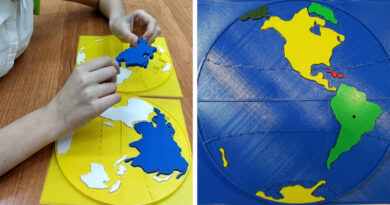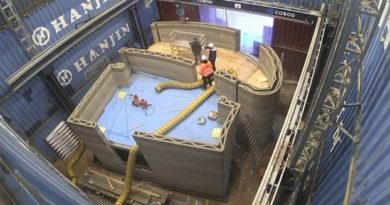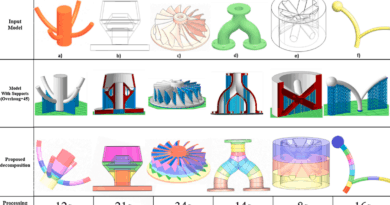U.S. AIR FORCE AND GE COLLABORATE TO 3D PRINT SUMP COVER FOR F110 JET ENGINE
Last year, GE Additive and GE Aviation proposed a collaborative metal additive manufacturing program with the U.S. Air Force to accelerate the adoption of AM for spare parts. That collaboration has just hit its first technology milestone with the 3D printing of a sump cover for the F110 jet engine which is used on both the F-15 and F-16 aircraft. The project is intended to improve military readiness and de-risk the supply chains of spare parts – especially for older military aircraft.
The Air Force’s Rapid Sustainment Office (RSO) is responsible for ensuring mission readiness by applying novel and relevant technologies that benefit the operation and sustainment of the Force. However, the sourcing and producing of spare parts with traditional manufacturing is becoming increasingly difficult as more and more aircraft in the fleet enter their sixth decade of service. This is where GE comes in, offering extensive experience in testing and qualifying AM parts that meet the extremely rigorous regulatory requirements of aviation.
Lisa Coroa-Bockley, general manager for advanced materials solutions at GE Aviation, added: “Speed is additive’s currency, and by applying our additive experiences with the LEAP fuel nozzle and other parts additively printed for the GE9X, being able to offer an end-to-end solution and also applying lessons learned of a robust certification processes, we’ve been able to accelerate the pace for the USAF.”
Since the inception of the program, its planned trajectory has been a “spiral development”, whereby each phase increases in complexity and scale. The starting point is simple part identification, progressing to family of parts consolidation, and eventually addressing whole complex systems such as common core heat exchangers.
Bonar’s team worked to ensure the additive design was robust when fine-tuning the AM parameters at GE’s Additive Technology Center (ATC) in Cincinnati. GE Additive M2 3D printers running cobalt-chrome were used to produce the first batch of sump covers. According to the Air Force, the program is ahead of schedule and phase 1b is already being planned. The teams will soon be focusing on a sump cover housing on the 40+ year old TF34 engine.
At this point, the Air Force has had its fair share of AM exposure, and not just for its jet engines. Earlier this year, a team of researchers from the Air Force successfully 3D printed a surgical retractor on a desktop 3D printer. The medical instrument is to be used in logistically challenging hostile environments where restocking is difficult or impossible. Elsewhere, the Air Force has also developed a method of 3D printing high-performance steel (AF-9628) for its weapons. The technology will be used to manufacture high-strength, lightweight ammunition.
Source: https://3dprintingindustry.com




